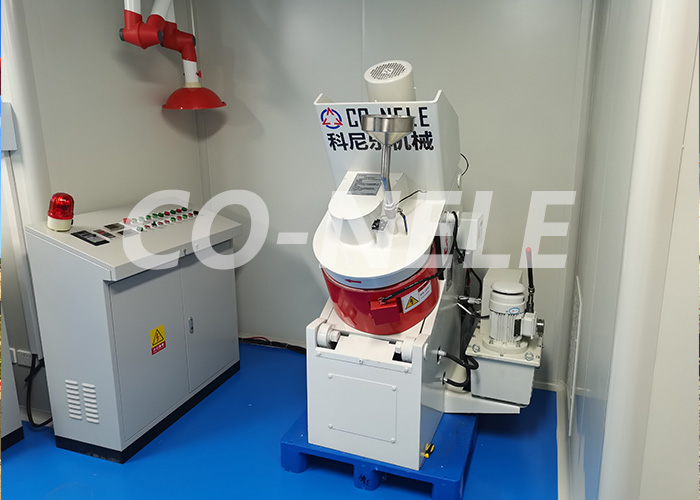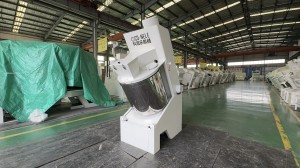Intensive mixers used in ceramic powder granulation.Ceramic powder granulation is the process where fine ceramic powders are turned into granules,which are larger,free-flowing particles.This is important because granules are easier to handle,transport,and use in subsequent processes like pressing or molding.
Intensive mixers would not only mix the powder with binders or other additives but also help form the granules.
CO-NELE Intensive Mixer,which I think is a type of intensive mixer that uses a rotating container and a mixing tool to create high shear.hich might have rotating paddles that mix and granulate.

I need to outline the key features of Intensive mixers.High-shear mixers,for example,have blades or rotors that move at high speeds,creating shear forces that help in breaking down particles and promoting agglomeration when binders are added.
The advantages of using intensive mixers would include faster processing times,more uniform mixing,better control over granule size and density,and the ability to handle a variety of materials.
Applications in ceramic processing would be in preparing granules for dry pressing,isostatic pressing,or other forming methods.The quality of the granules affects the final product’s properties,like density,strength,and uniformity.So the mixer’s ability to produce consistent granules is crucial.
Intensive mixer the process parameters that are important,like mixing time,speed of the blades,binder addition rate,and temperature control.These parameters need to be optimized to get the desired granule characteristics.Maybe moisture content is also a factor,especially if a liquid binder is used.The mixer needs to distribute the binder evenly throughout the powder to form granules without making them too wet or too dry.

Intensive Mixers for Ceramic Powder Granulation
Ceramic powder granulation transforms fine powders into free-flowing granules,enhancing handling and processing.Intensive mixers are pivotal in this process,combining high-energy mixing with granulation through mechanical forces and binder integration.
Intensive Mixers:
Design:Rotating vessel with counter-rotating mixing tools.
Function:Combines centrifugal and shear forces for homogeneous granule formation.
Intensive Mixer Working Principles
Shear and Impact Forces:Blades/rotors apply mechanical energy to break particles,promoting agglomeration.
Binder Integration:Liquid binders are sprayed and distributed uniformly,forming granules via capillary forces.
Granule Growth Control:Adjusting blade speed and mixing time regulates granule density and size.
Adjustable Speed:Controls shear intensity for tailored granule properties.
Wear-Resistant Materials:Ceramic-lined or hardened steel components to withstand abrasive ceramics.
Automation:Sensors and PLCs for real-time monitoring of moisture,size,and density.
Uniform Granules:Consistent size and density enhance pressing/molding outcomes.
Efficiency:Rapid processing reduces cycle times.
Versatility:Handles diverse materials(alumina,zirconia)and binders(PVA,PEG).
Heat Generation:Requires cooling systems to prevent binder degradation.
Wear and Tear:Abrasive ceramics necessitate frequent maintenance.
Over-Granulation:Risk of dense granules if parameters are misoptimized.
Material Properties:Abrasiveness,particle size,and binder type.
Scale:Batch mixers for precision;continuous systems for high-volume production.
Maintenance:Easy-cleaning designs and durable materials to reduce downtime.
Smart Control Systems:AI-driven adjustments for optimal granulation.
Advanced Materials:Composite coatings to extend mixer lifespan.
Intensive mixers like high-shear and Eirich types are integral to ceramic granulation,offering efficiency and control.Selection hinges on material needs,production scale,and technological features to ensure high-quality granules for down
Post time: May-28-2025








